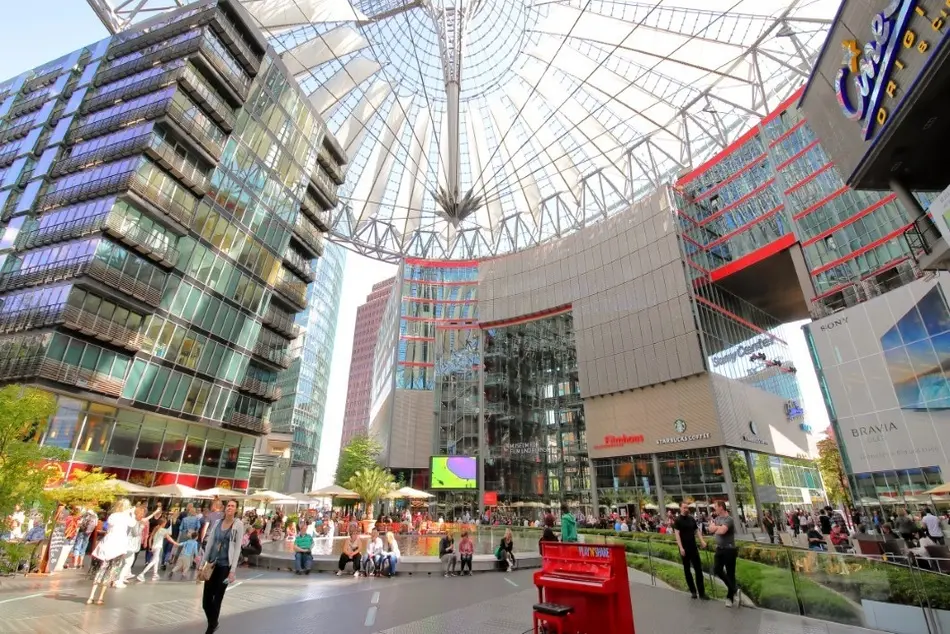SHOPPING TOURISM IS BOOMING IN GERMANY
Neuschwanstein Castle, Cologne Cathedral and the Brandenburg Gate are no longer the only attractions that lure tourists to Germany. Many travelers from abroad find the Berlin luxury department store KaDeWe at least as attractive as the Königsallee in Düsseldorf or bargain havens like the Outletcity Metzingen.

Neuschwanstein Castle, Cologne Cathedral and the Brandenburg Gate are no longer the only attractions that lure tourists to Germany. Many travelers from abroad find the Berlin luxury department store KaDeWe at least as attractive as the Königsallee in Düsseldorf or bargain havens like the Outletcity Metzingen.
Above all, tourists from non-EU countries such as China, Russia, and the Gulf States like shopping because they can have their VAT refunded on departure. While in recent years domestic customers have found their way less and less into German city centers, also due to the triumph of online trade, the number of tourists from non-EU countries has risen by a whopping 75 percent to over 16 million over the past ten years.
The duty-free shopping expenses of this group have more than doubled - from 1.0 to 2.5 billion euros, according to a recent study by the Cologne trade research institute EHI commissioned by the tax-free service provider Global Blue.
The Chinese, in particular, proved to be extremely willing to consume. According to the study, they accounted for over 40 percent of tax-free sales. Second place was occupied by tourists from Russia - by a considerable margin - and third place by holidaymakers from the Gulf states. Together, the tourists from these three regions accounted for almost two-thirds of the duty-free shopping turnover in Germany.
Fashion and clothing are the most popular items for shopping tourism. They accounted for a good half of all expenditures, the EHI reported. Second place in the popularity scale was taken by watches and jewelry with a 30 percent share of sales.
Moreover, retailers are trying to make shopping tourism as easy as possible for customers who have travelled a long way. Chinese tourists can pay in more and more shops in Germany with Alipay, the payment service of the Chinese online giant Alibaba. Kaufhof accepts Alipay as well as the fashion chain Breuninger or the drugstore chains Rossmann and dm. They want to offer visitors from China a method of payment "with which they are familiar," emphasized dm manager Martin Dallmeier.
In Germany, the shopping metropolises of Munich, Frankfurt, and Berlin benefit the most from the shopping tourism. Düsseldorf, Hamburg, and Cologne follow some distance behind. In many department stores and noble boutiques, staff who speak Mandarin, Russian or Arabic are nothing unusual anymore.
However, the increased focus on foreign customer groups is not entirely risk-free for retailers. This has been particularly evident in recent years. At around 2.5 billion euros in 2018, the expenditure of tourists from non-EU countries was significantly higher than ten years ago. But it was also significantly lower than in the record year 2015 when Germany still purchased duty-free for more than 3.6 billion euros.
According to the EHI study, there is a whole range of reasons for the slump in sales: first and foremost, the introduction of import duties on luxury goods in China. "Chinese tourists carrying goods purchased abroad worth more than 5000 yuan (approx. 650 euros) have had to pay between 30 and 70 percent taxes since 2016, which has greatly dampened the purely price-related incentive of Chinese shopping tourism," says the EHI study. According to a study by management consultants Bain on the luxury market, more and more Chinese are buying designer clothing and fine watches in their home country.
In addition, the economic problems in Russia have led to a temporary significant decline in the number of Russian tourists. And there were similar problems in the Arab world as well.



